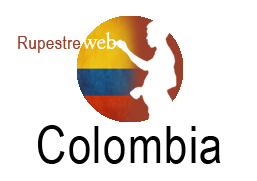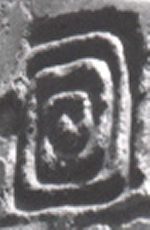
The colombian rock art spiral. A shamanic tunnel?
Harry Andrew Marriner. B.A. Pyschology. San Diego State University. Coordinator Western Cundinamarca Rock Art Investigations GIPRI Colombia. harry@spamcurb.com
Published originally in February 2003 in www.gipri.org. Authorized editing (with graphics) specially by the author for Rupestreweb, 2008.
In the center of any spiral is the calm core through which man passes to eternity.
Jill Purce / The Mystic Spiral
Introduction
Spirals
have been found in the form of pictographs or petroglyphs in most
countries and cultures throughout the world. A simple design, it’s
possibly the most common rock art motif in Colombia, appearing more
times in the form of a petroglyph than a pictograph.
Colombian petroglyph spirals tend to be curvilinear while pictograph
spirals are generally angular and painted in red; however there are
many exceptions (Marriner 2002:5). Easy to engrave or paint, they may
have been used for both exoteric (for the general public) and esoteric
(only for the initiated) purposes in pre-historic Colombian rock art.
Identification of the Colombian rock artist and the interpretation of
rock art motifs has been the theme of much controversy during the past
decade. The computer age and the internet have enabled researchers to
disseminate their studies and documentation of rock art sites to a
wider audience of interested persons. This has created a much larger
and easier-to-access data base of rock art investigations than has been
previously possible.
As a result, it’s now apparent that more rock art specialists accept
the idea that shamans, the religious leaders of most hunter-gatherer
societies, were responsible for making most rock art either directly or
indirectly.
This study examines spirals and their identified uses in different
cultures. It also investigates the possibility of a common underlying
shamanic theme in many spiral motifs.
Please note, that for purposes of this paper, counterclockwise spirals
are defined as those starting at the center and increasing to the outer
limit in a counterclockwise direction. Many times counterclockwise
spirals relate to rising or flying upwards. A clockwise spiral is
defined as one that starts at the center and increases to the outer
limit in a clockwise direction. Clockwise spirals are many times
related to the concept of descending. (Figures 1 & 2)
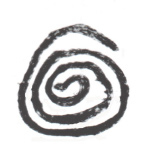
Fig. 1 Clockwise spiral.La Huerta, Tibacuy, Cundinamarca
(Computerenhanced from Alvaro Botiva foto).
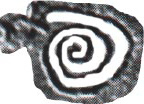
Fig. 2 Counter Clockwise spiral.El Palco, Tibacuy, Cundinamarca
(Computer enhancedby author from Alvaro Botiva foto).
The shaman´s role in society
The white man Goes into his church house and talks about Jesus; The Indian Goes into his teepee and talks to Jesus. J.S. Slotkin
The
role of the shaman in hunter-gatherer and horticultural societies has
been written in detail by many authors (e.g.Vitebsky 1995). Generally
speaking, the shaman is the tribal religious leader-healer who acquires
supernatural powers, including power songs, from animals, birds, or
reptiles during an initiation when he goes on a vision quest by
entering a trance.
The shaman’s role
encompasses tribal issues that are serious and need to be resolved. A
community may be starving from lack of animals, crop failure due to
flooding, freezing conditions, an extended drought or a tribal member
may be very sick. The shaman is consulted to find the cause of illness
and cure it. He may determine that the community has done something to
cause an unbalanced cosmos, the soul has been stolen from a person or
an evil object has entered the body of a person causing them to be
sick. Everyday illnesses and problems are resolved using chants,
magical prayers, and incense. Using secret herbal potions, dances,
power songs and rituals, the shaman summons his spirit helpers during a
trance where he dies, is reborn, then battles and defeats hostile
spirits causing the problem. He may suck a foreign object directly from
the body of the ill patient to cleanse it of impurities or blow tobacco
smoke on the patient.
For more serious problems the shaman uses the trance to enter an
altered reality journey for purposes of healing the seriously ill,
predicting the future, bringing rain or sun to ensure a cosmic balance,
conferring with dead ancestors, obtaining or using spirit helpers, or
obtaining supernatural powers to control certain animals.
During his spirit journey the shaman may fly up to the sky world or
down to the underworld to plead with the spirit causing the problem,
ask advice from deceased ancestors, physically battle evil spirits or
win debates to gain concessions. The flight is usually upward to the
heavens. When the shaman triumphs, his power forces the malevolent
spirit to correct the problem. He then banishes him into this air or
isolates him in a container or place where he can’t cause any more
trouble.
After returning from this alternate reality, many researchers believe
that shamans, or people under their direction, painted or engraved
their visions, or symbols relating to them, on rocks (Figure 3a). One
author wrote “It is probably extremely significant that the designs in
many of the aspects of modern Indian artistry in the northwest Amazon
are similar to or the same as those found in many of the
rock-engravings... Studies have indicated that these designs…are
suggested by visions experienced during the intoxication produced by
caapi (Banisteriopsis Caapi),...
There is no reason to doubt that the ancient artisans who made these
rock-engravings had used the same drugs and had the same experiences as
the natives of today” (Schultes 1988:80) (Figure 3b). These shamans
enter the spirit world through a tunnel or spiral vortex portal and
many believe that they actually pass through the stone surface at rock
art sites (Turpin 85). (Figure 4)
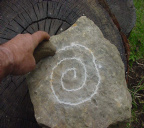
Fig. 3a. Technique of scribing CCW petroglyph design.
(Foto and design by author)
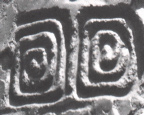
Fig. 3b. CCW petroglyphs.
La Pedrera, Rio Caqueta, Amazonas.
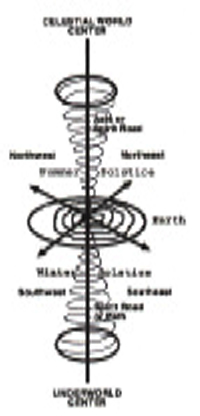
Fig. 4 The Cosmos as seen
by a shaman. (Drawing by author)
Trance stages
Modern
studies of the brain have found that its main function is to make
images. Under normal circumstances, external stimuli gathered by our
sensory organs (eyes, ears, nose, skin, etc.) are received by the brain
and processed.
The food we eat is
the energy source used by the brain to perform its function. If
external stimuli are blocked (e.g. isolation), or the food source is
blocked or changed, in the case of toxins, or absent in the case
of starvation, the brain reacts only to internal stimulation, and
“abnormal” images are created. These images, and those caused by
physical pressure on the retina, are generally called entoptic
phenomena and are composed of “phosphenes” (visual effects produced by
mechanical pressure on the eye or electrical stimulation of the
brain) and “form constants” (specific geometric shapes originating from
other parts of the optic system away form the eye).
The
brain may cut off reception of some external stimuli when its “normal”
food source is not available and rely more heavily on internal
stimulation. In the case of dreaming, for instance, the brain continues
to do its job of making images using available stimuli to create a
different “reality.”
The word
Reality is difficult to define since each of us perceives the same
material world in a similar, but slightly different way. One person may
look at a tree and focus on the leaves, while another would concentrate
on the bark. An artist may look at the general form of the tree or
carefully note the root system or branches.
Altered
Reality or Trance is a term used to describe a state where the brain
has created images when its normal process has been interrupted by
toxins, fatigue, starvation or a super-saturation of stimuli such as
drumming, chanting, or dancing.
Psychologists have shown us that there are three main stages plus a transitional stage to all trances:
Stage 1
is the gentlest stage. Geometric phosphene shapes are seen in the form
of dots, zigzags, grills, groups of lines or parallel curves and
meanders. Even with open eyes, these luminescent forms may be seen on
any surface including walls and ceilings. These Stage 1 symbols are
similar to many red pictographs found in the Muisca cultural zone in
the high plains area of Andean Colombia where the Muisca used the drug
Yopo to enter a trance state.
The following list includes
some of the Colombian trance-inducing plants with similar
characteristics that may have been used to enter a trance state where
the spiral motif would have been seen. The list contains: a. the common
name used by Colombian Indians. b. the botanical name. c. other local
names for the plant. d. tribes who used the plant to enter a trance
state.
-
Ayahuasca. Bot. Banisteriopsis caapi. (aka: caapi, dapa, mihi, kahi, natema, pinde, yaje or yage. Tribes: Tukano, Siona, Yekwana, Kofan, Yukuna, Barasana, Guahibo. Yoco. Bot. Paullinia Yoco. Yoco is an important stimulant possibly mixed with Ayahuasca to make the narcotic Yaje Yoco.
Yoco contains a large amount of caffeine, and is one of the most
important plants in the diet of the Indians of the Putumayo and western
Caqueta. Part of the stem, near the flower, has an unusual spiral shape
similar to a common Colombian rock art motif (Figure 5).
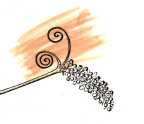
Fig. 5 Yoco flower.
(Richard Schultes)
-
Chiricaspi. Bot. Brunfelsia chiricaspi. (aka: chiric-sanango, borrachero). Tribe: Kofan.
-
Culebra Borrachero. Bot. Methysticodendron amesianum. Tribes: Kansa, Ingano.
-
Epena. Bot. Virola calophylia warb. (aka: nyakwana, yakee, parica, yato). Tribe: Maku.
- Ucue. Bot. Virola theiodora. Tribe: Murui-Muinane
-
Floripondia. Bot. Brugmansia arborea. (aka: borrachero, huacacachu, huanto, makoa, toa, tonga). Tribes: Muisca, Sibundoy.
-
Paguando. Bot. Lochroma fuchsioides Miers. (aka: borrachero, totubjansush). Tribes: Sibundoy, Kamsa.
-
Taique. Bot. Desfontainia spinosa. (aka: borrachero). Tribe: Kamsa.
-
Yopo. Bot. Anadenanthera colubrine. (aka: cohoba, huilca or vilca, sebil). Tribe: Muisca.
While
Stage 1 symbols are repeated in rock art throughout different cultures,
their exoteric meanings differ considerably due to local cultural
influences. The Colombian Tukano Indians are one example of how some of
these forms are culturally influenced. A series of brilliant dots
represents the Milky Way, goal of their shamanic flights. Curved,
parallel lines represent a rainbow, and sometimes the penis of Father
Sun. The Tukanos selected about two dozen phosphenes and assigned each
a special meaning in terms of fertility, sexuality and matrimonial
norms.
A spiral may be described to the
general public as an exoteric representation of the incest taboo, while
the shaman may view it in another way (Reichel-Dolmatoff 1978:32). The
exoteric meanings of tribal symbols are taught to the general public by
the shaman and painted for everyone to see. Every symbol represents an
ideographic code transmitting cultural messages that refer to basic
values. Esoteric meanings are hidden, secret and reserved only for
initiated cult members. A Tukano spiral may also represent a whirlpool:
home of ancestors; a liminary place where contact with those ancestors
can only be made by entering that other reality.
Stage 2.
visions evolve from Stage 1 geometric forms. During Stage 2, shamans
rationalize the geometric forms and see them transformed into objects
with religious or emotional significance, depending on the emotional
and physical state of the shaman. A dehydrated person may see a
drinking vessel, while a frightened person may see zigzags transformed
into a snake.
Stage 3.
visions are realistic and three-dimensional. They are seen by the
shaman to float on walls and on the ceiling. Many times they transform
themselves into other objects. During this stage the shaman may
transform himself into an animal such as a deer, bird, or jaguar and
fly to the sky or the underworld to encounter monsters and other
fearful creatures. In this stage the shaman may acquire his animal
spirit helper or helpers that will accompany him throughout his
lifetime. He may meet tribal ancestors who teach and lecture him.
Plants and animals speak and tell him their names, uses and meanings.
Transition from Stage 2 to Stage 3.
is reached by means of a spiral vortex or tunnel. The spiral is
one of the most common designs reportedly seen during a shamanic trance
(Oster 1970) and coincidentally probably the most common rock art motif
(Figure 6). Preference is sometimes seen at certain rock art sites for
a clockwise spiral such as seen at El Palco, Tibacuy where 19 out of 26
(73%) single spirals are clockwise. At other locations such as Ainsuca,
Sasaima, the opposite occurs where six out of seven (86%) single
spirals are counter clockwise. Near Ainsuca at Taray, Sasaima we see
about an even distribution of spiral orientation preference where seven
out of 15 (47%) are counter clockwise.

Fig. 6 Clockwise spiral pictograph. Bojaca, Cundinamarca
(GIPRI archives foto computer enhanced by author)
During tribal or shaman initiation trances, the novice feels drawn
through a spiral and eventually sees a strong light at the end.
Colombian Tukano Indians relate that tunnels and funnels are seen
during their trances after consuming the plant yage (Slade and Bentall
154).
As the participant passes through, he is said to have visions of
persons, animals and other elements are seen through a grillwork on the
side of the spiral tunnel.
It is important to note that a common shamanic theme is death and
rebirth. Initiation is death from one state and rebirth into another
passing through a transitional spiral vortex or tunnel. The full
fledged shaman also has the sensation of passing through a spiral
vortex during shamanic flight, but in this case it is interpreted as
the entrance to the spirit world. Spiraling downward the shaman enters
the underworld returning to the womb of the Earth Mother for a new
birth. Spiraling upward the shaman enters the sky world. The hypothesis
of this paper is that the transitional stage may, at times, be
represented in the form of a spiral in some Colombian rock art. (Figure
7)
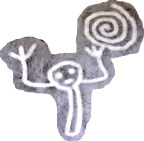
Fig. 7 Shaman in flight and spiral petroglyh. Finca Castro, Alban, Cundinamarca.
(Foto and computer enhancement by author)
Spiral Symbolism
Clottes
and Lewis-Williams (Clottes and Lewis-Williams 18) feel strongly that
the three stages of a shamanic trance are universal and are an integral
part of the human nervous system. One investigator has shown that the
group of psychoactive drugs known as hallucinogens commonly used by
shamans owe their activity to a very few types of chemical substances
that act in a specific way upon a definite part of the central nervous
system. Hallucinogens produce effects such as deep changes in the
sphere of experience, in perception of reality, even of space and time
and in consciousness of self. Depersonalization may occur.
The trance state is short-lived, and lasts only until the causative
substance is changed through digestion or excreted from the body. The
effects of different hallucinogens vary according to the way they are
prepared, the setting in which they are taken, the amount ingested, the
number and kinds of additives, and the purposes for which they are
used, as well as the ceremonial control exercised by the shaman. But
all hallucinogens have similar trance STAGES as opposed to mood
modifying psychoactive drugs such as analgesics and euphorics,
sedatives and tranquilizers, and hypnotics (Schultes 13,14).
Therefore, apparently all trances induced by hallucinogenic plants have
a transitional stage where shamans pass through a similar spiral or
vortex tunnel. Waiká Indian shamans have stated that the most important
part of their trance state is the transportation of their soul to other
worlds (Schultes170).
This implies that the spiral tunnel of the transition between stages 2
and 3 plays an important part of shamanic alternate reality visions and
may have been recorded in rock art symbolizing the transitional stage,
just as geometric shapes in rock art could be images from Stage 1, and
realistic or floating animals in rock art could be created from Stage 3
images.
Anthropologists have proved that some Indians (e.g. Colombian Barasana
shamans), reproduce geometric patterns in the sand that represent
visions seen during their trances and paint their visions on the walls
of their huts (Waimaja shamans). Interpretation of these design motifs
is believed to be culture-bound but, on the other hand, what is
actually seen and recorded is controlled by specific biochemical
effects of the active principles in the plant (Schultes 124).
Physiologically speaking, spirals seen during trances are caused by
capillary circulation. The Tunnel Effect arises partly from the foveal
cones and environing rods being smaller and more closely arranged than
those of the periphery and in consequence the geometric figures
perceived are likely to be smaller in the center than at the periphery
(Marshall 300).
Spiral motifs and indian cultures
Spiral
motifs are found in a wide variety of representations throughout native
cultures. There appears to be an underlying common connection between
the spiral and shamanic activity in nearly all cases. It isn’t
surprising that more than 90% of hunter-gatherer tribes incorporate the
shamanic trance as an important part of their culture. One study
concluded that 62% of 488 societies around the world had ritualized
cultural patterns involving hallucinations (Bourguignon 187).
The following examples are listed to show instances where the spiral is
associated with shamanic activity in native cultures. They support the
hypothesis that many of the Colombian rock art spirals may represent
the shaman’s transition between Stages 2 and 3 of an altered reality
journey to another world.
*The Tukano Indians of Colombia draw a clockwise spiral during the
Yurupari ancestor-communication ceremony. An important part of this
ceremony is a long curled sacred bark trumpet that leaves a spiral
impression when pressed into the earth. Participants pass through the
transitional (spiral/vortex) transitional trance stage to communicate
with dead relatives when using the drug Yage. Tunnels and funnels are
common motifs seen under the influence of Yage (Slade and Bentall 154).
“Practically all decorative elements…are said…to be derived from
hallucinatory imagery…When asked about these paintings, the Indians
simply reply This is what we see when we drink Yaje.”(Reichel-Dolmatoff quoted in Schultes and Hofmann 121).
*In
1995 Medardo Largo, an Indian chief from the ancient Umbra cultural
zone of Caldas, Colombia, was asked by investigators to interpret a
spiral petroglyph. He said that it represented a person in a special
state of concentration or “thinking” during a ritual. In other
words, he was describing a trance state. (Gelmur 56).
*Mesoamerican
priests used the spiral symbol to depict smoke which rises to the sky
in spirals. Priests devoted to the worship of Quezalcoatl wore a
“Wind-Jewel” pectoral in the shape of a spiral cut from the
cross-section of a conch shell. It was emblematic of the wind god
Ehecatl who represents air and sky as mediator between the heavens,
earth, and underworld (Labbe 15). In other words, Ehecatl resided in
the shamanic transitional zone between worlds.
*Sun
shadows on spiral petroglyphs at Fajada Butte in Chaco Canyon, Utah
mark solstice dates and other solar and lunar events. The winter
solstice, in particular, was an important time to shamans.
The sun is at its lowest altitude at winter solstice and many shamans
believe a tunnel or opening occurs on this date making it easier to
transport them to the sky world in a trance state. Petroglyph spirals
may have been mnemonic devices marking a special date to remind the
shaman it was time for an astral journey. There are indications that
sometimes clockwise rock art spirals may relate to the winter solstice
and counter clockwise spirals may relate to the summer solstice
(Marriner 1998:29).
Some southwestern American Indian rock used the counter clockwise
spiral as a symbol for the concept of rising or going up (Martineau 6,
18, 19, 20, 30) as in the case of a shaman flying up to the celestial
world, which was the direction of most shamanic trips.
The clockwise spiral stands for the concept of going down as in a shamanic trip to the underworld.
*Spiral petroglyphs may have been used as solstice markers at Ainsuca,
Sasaima, Colombia, and at other rock art sites (Marriner 1998:42, 43).
These may have been important shamanic trance sites marked by spirals
to indicate the site’s function. Rock art spirals such as these may
also have been used as mandalas.
Mandalas are designs focused on by shamans to aid them in entering a
trance state more quickly. A shaman looking at a spiral mandala during
a trance may reduce the time needed to transport him into the spirit
world. This method of entering the spirit world would most certainly be
jealously guarded by the shaman and only passed on to his pupils after
their initiation. In some cultures shamans believe they actually pass
through the rock at their site during a trance (Whitely 22).
A spiral engraved at the sacred site could represent the whirlpool,
whirlwind, tunnel or cave experienced by the shaman during his
transitional from Stage 2 to Stage 3. In some instances an experienced
shaman only has to enter a cave to reproduce the effect of a spiral
whirlwind that he normally experiences in an altered state of
consciousness (Clottes 33).
*Some
gold anthropomorphic figures from Colombia represent shamans in trance.
Spiral eyes and the spiral motifs around their heads identify the
shaman during a trance state (Reichel-Dolmatoff 1988) and may indicate
that the shaman is in transition to Stage 3 of his trance.
*Many
Colombian spiral petroglyphs along the Amazon, Orinoco, Magdalena and
Cauca river valleys may be of Carib origin, made during migrations, or
after new lands were settled. It is believed by the Dutch Guiana Carib
Indians that an ecstatic experience can occur only as part of a
celestial other-reality journey.
The Carib
shaman is helped in his journey by a vulture to reach the sky by means
of a spiral ladder that is an axismundi, the point where earth and sky
meet (Mircea 1964:128). Other cultures use the concept of a Vortex-Tree
as an axismundi (Purce 23). Here again we see the spiral viewed as a transitional device.
*A
petroglyph in the United States at Mesa Verde National Park Pictograph
Point of squared double spirals was interpreted by a group of Hopi men
in 1942 to represent the Sipapu or emergence point from the underworld
(Jones Jr. 1994:11:160-162). In Arizona we also find the spiral
representing a transitional phase from one world to another.
*Andaman Islanders call the time of the year between monsoon seasons kimil
when frightening waterspouts and cyclones in the shape of spiraling
vortices occur. Although a long distance away on the globe, this fact
is very significant to our study in Colombia since the word kimil
is also used by the islanders to stand for the transition to the
alternate reality and for religious trance (Goodman 86). The
association between spiral shapes and the transition state of a trance
is obvious. Future studies may show that the association is more
universal than we believe today.
*A
Camonica Valley, Italy petroglyph of a face in the center of a
clockwise spiral strongly suggests the portrayal of a shaman in the
Transition Stage of a trance state, possibly indicating passage through
the spiral rock “door” to another world (Anati 216). (Figure 8)
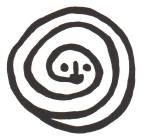
Fig. 8 Clockwise spiral petroglyh with face.
Camonica, Italy (Emmanuel Anati)
*Close observation of some primitive dance patterns used for healing
and incantation are seen in the form of a spiral curve.
“Such spiral movements may be regarded as figures intended
to induce a state of ecstasy and to enable man to escape from
the material world and to enter the beyond, through the
‘hole’ symbolized by the mystic center
(Cirlot 306).”
Here again we see the spiral associated with the transitional stage during shamanic activity.
*Some
Colombian petroglyphs incorporate the spiral motif as an animal’s tail.
Snakes and monkeys are the two most common animal motifs with spiral
tails. Both these shamanic animals may be seen at the sides of the
Transition Spiral between Stages 2 and 3 of a shaman’s trance. Since a
shaman may have either of these animals as his spirit helpers, the
animal/spiral association lends support to hypothesis of this paper.
*A
20th Century painting by Native American deer-dancer Michael Brown
(Rising Eagle) shows the climax of a peyote ceremony when a deer hunter
and a slain deer become one spirit as they travel through the portal of
the vision depicted as a cross-hatched vertical spiral (Halifax 71),
typical of the Transition stage (Figure 9).
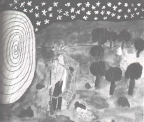
Fig. 9 Peyote celebrant and slain deer becoming one spirit entering spiral
portal of a vision. (Painting by Michael Brown-Rising Eagle. Joan Halifax collection)
*In
some shamanic cultures “Certain forms, such as the labyrinth (a spiral
form), represent the explicit experience of initiation-entry into the
abyss of the mysteries, the pilgrimage of the spirit.”(Halifax 38) The
Northern Aranda of Australia use a ground-painting as a sacred gateway
to the Other World (Halifax 68). This confirms that some cultures used
a design drawn on natural materials as a transitional device to gain
access to another world, just as the Colombian shaman could have used
the spiral for his supernatural portal.
*The
first spiral known in the history of art is a Paleolithic talisman
found at a ritual cave burial in Siberia. This mammoth ivory artifact
shows a large spiral surrounded by four double spirals. The center
spiral has a hole drilled through to the other side (Purce 100,101),
possibly indicating an access route to the spirit world.
*Stylized
spirals on Peruvian ceramics (aprox. 300 B.C.?) illustrate the
hallucinogenic experiences induced by the San Pedro cactus (Schultes
and Hofmann 154).
*Colombian
Barasana Indians draw a labyrinth design to represent the path to the
Other World. Trance participants say the ‘horizon opens like a door’ to
enter the realm of spirits.
*A
counter clockwise spiral petroglyh in Box Canyon, South Mountains,
Arizona, is located close to a gila monster motif and what may be a
representation of a bird flying. One archaeologist suggested that the
spiral represents a portal into the underworld (Bostwick 98). The
counterclockwise spiral more likely represents a portal into the sky
world if the use of counter clockwise=rising is valid for this region.
*Historical
accounts of North American Indians interpreting their rock art relate
that many of the symbols seen in rock are derived from a Universal Sign
Language that was understood by all Indians from coast to coast. The
powerful “medicine” or supernatural power of the Medicine Man or shaman
was represented in sign language by holding the right hand close to the
forehead, palm outwards, index and second fingers separated and
pointing upwards, others and thumb closed as the hand is moved upward
and turns from right to left (counter clockwise) in a SPIRAL (Tomkins
37) (Figure 10). In other words the Medicine man’s power comes from a
spiraling tunnel or vortex leading to the celestial world.
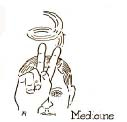
Fig 10. Universal North American Indian Sign Language for Medicine Man’s Medicine.
Note the upward spiral shape. (William Tomkins)
*The
Huichol Indians of northwest Mexico speak of entering the threshold of
another world during their peyote trance: “We have become new, we are
clean, we are recently born.” This is symbolized by a cord rolled in
the form of a spiral which is a metaphor of their journey to “the place
of origin” and subsequently returning to “this world.” They have died
and been re-born in the shamanic sense. “How many spirals are there
represented in American petroglyphs! How many of its variants: volute,
labyrinths, multiple concentric circles! How many stairs and
rectangular labyrinths in its geometric paintings, are also symbols of
the spiritual path of the dead (and initiates) towards the Great
Beyond!” (Schobinger 67).
*The
Waimaha Indians of Vaupes, Colombia state that every symbol painted on
their homes, on their musical instruments and engraved on rocks
represents something seen during a yage vision. They also interpret the
spiral as marking the spot where someone has passed during a hunt,
migration or journey. They explain that it could be used to represent
the Paye or shaman traveling to other world. A double spiral represents
the spirit world to them as seen during a yage vision, and is painted
on their tribal buildings (Marriner 2003).
Both
neuropsychology and ethnology have been researched before suggesting a
possible meaning for the Colombian rock art spiral. Since this motif is
found world-wide, it is logical to assume that the reason for a
universal use is more likely to be neuropyschiatric rather than
ethnologic since legends and myths differ from region to region, but
the effect of harmine alkaloids used for most drug induced trances is
similar.
Considering the above mentioned
examples taken from various cultures, one logical conclusion is that
the Colombian rock art spiral may have represented the transitional
stage between phases 2 and 3 of a shamanic trance. It implies a strong
interaction between the shamans and the spirit world. Most certainly
there are circumstances where the spiral was used as a convenient motif
for other reasons, but the best-fit hypothesis is that most
representations of the Colombian spiral are symbols of the vortex or
spiral tunnel leading to the occult world of the spirits.
Spiral motifs are frequently found associated with stick figure motifs
with raised hands engraved or drawn with three fingers and three toes.
These stick figures may represent flying shamans in the act of being
transformed into birds with three toes, or at times a spirit guarding
the entrance to another world and access to esoteric knowledge, as in
the case of some Waimaja petroglyphs.
Posture during trance affects the visions seen and may be another
important aspect to consider when attempting to interpret the meaning
of rock art motifs. One example showing the transformation of a shaman
with raised arms into a three-toed bird is clearly seen in a Cueva
Pintada pictograph in Baja California (Smith 1985:40). This posture may
aid in making the shaman feel like he is flying during his trance.
Conclusions
All
Colombian Indians interviewed during this study, and many others
interviewed by other researchers, stated that all designs engraved or
painted on rocks, or painted on ceremonial objects or tribal huts, were
representations of things seen during trance visions. The spiral is a
common Colombian rock art motif and also a universal phenomenon
apparently seen by all shamans during the transition between stages 2
and 3 of a trance state. There is a logical connection between the
experience of moving through a spiral or vortex during a shamanic
trance and its representation in Colombian rock art.
Many, if not all, Colombian rock art sites were sacred places charged
with supernatural power for the shaman. The shaman utilized this power
to realize shamanic trips and fly into other worlds. A spiral may have
been used to mark a sacred spot where an altered state of consciousness
trip took place. It may have been used repeatedly by the shaman as a
mandala to enter the spirit realm through a spiral carved or painted on
stone at the same spot. The shaman may have believed that he was
actually passing through the rock art spiral to enter the spirit world.
Visions seen during a trance state may be culturally influenced and
structured but the motifs seen and recorded are pan-human phenomena.
This paper suggests one logical explanation for the widespread use of
the spiral as a common Colombian rock art motif. It may have been used
to represent a shaman’s portal to enter the spirit world. The theory is
based on a universal experience of passing through a spiral or vortex
tunnel shared by all shamans during the Transition between phases 2 and
3 of a trance. World-wide, sensory deprivation (isolation, fasting, or
lack of sleep) is the most common way to enter a trance state but, in
Colombia, it appears that plants (seeds, leaves, flowers or roots) were
the most common way shamans entered their altered-reality trances.
Examples from various cultures have been presented to support the
suggested use of the Colombian rock art spiral motif.
One researcher studying the imagery of hallucinogenic intoxication
wrote that “...possibly no other artistic motif conveys the concept of
the journey through a tunnel as effectively as concentric circles and
spirals (Benson and Sehgal 1987:3-4).”
---
SOME PICTOGRAPH SITES IN CUNDINAMARCA, COLOMBIA WITH THE SPIRAL MOTIF
1. Bojaca. Hacienda Chunava. Piedras Pintadas (Chivonegro).
2. Facatativa. Piedras de Tunja. Piedra No. 41.
3. Sibate-Soacha. Finca San Benito. Piedra Los Alambiques.
4. Macheta. Piedra La Flor.
5. Pandi. El Helechal.

—¿Preguntas,
comentarios? escriba a: rupestreweb@yahoogroups.com—
Cómo citar este artículo:
Marriner, Harry Andrew. The colombian rock art spiral. A shamanic tunnel?. En Rupestreweb, http://www.rupestreweb.info/espiral.html
2008
BIBLIOGRAPHY
Anati, Emmanuel. Camonica Valley. Alfred A. Knopf. New York. 1961.
Benson, Arlene, and Linda Sehgal. The Light at the End of the Tunnel. In Rock Art Papers vol. 5, edited by Ken Hedges. San Diego Museum of Man. 1987.
Bostwick, Todd W. Scenes of Power: Shamanism and Rock Art in the South Mountains, Arizona. In Rock Art Papers vol. 13, edited by Ken Hedges. San Diego Museum of Man Papers 35. 1998.
Bourguignon, Erika. "Altered states of consciousness, myths, and rituals." Ed. Brian M. du Toit. In Drugs, Rituals and Altered States of Consciousness. Rotterdam: A.A. Balkema, 1977. 7-24.
Cirlot, J.E. A Dictionary of Symbols. Philosophical Library. New York. 1983.
Clottes, Jean and David Lewis-Williams. Los Chamanes de la Prehistoria. Editorial Ariel, S.A. Barcelona. 2001.
Gelemur de Rendón, Anielka and Guillermo Rendón Garcia. Samoga: Enigma y Desciframient. Universidad de Caldas. Manizales. 1998.
Goodman, Felicitas D. Ecstasy, Ritual, and Alternate Reality. Indiana University Press. Bloomington. 1992.
Halifax, Joan. Shaman: The Wounded Healer. Thames and Hudson. New York. 1988.
Marriner, Harry Andrew. Rock Artists and Skywatchers In Ancient Colombia. Bogota. 1998. Paper presented at International Rock Art Congress (IRAC 99), Ripon Wisconsin. 1999.
Marriner, Harry Andrew. Colombian Rock Art Motifs: Some Ideas For Interpretation. Bogota. Digitally published on Gipri Colombia (www.ciudadlatina.net/gipri) and Rupestreweb, (http://www.rupestreweb.info/motif.html) , 2002.
Marriner, Harry Andrew.
Personal interview with Waimaha Indians Tomas, Fernando and Jose from
Vaupes, Colombia. Introduction courtesy of Joel and Nancy Stoelte.
Bogota. March 12, 2003.
Martineau, LaVan. The Rocks Begin To Speak. PC Publications. Las Vegas. 1987.
Marshall, C.R. "An enquiry into the cause of mescal visions." The Journal of Neurology and Psychopathology. 37 (1937): 289-304.
Mircea, Eliade. Shamanism:Archaic Techniques of Ecstasy. Translated by Willard Trask. Bolligen Series 76. Princeton University Press. Princeton. 1964.
Oster, Gerald. "Phosphenes," Scientific American. 2 (1970): 83-87.
Purce, Jill. The Mystic Spiral: Journey of the Soul. Thames and Hudson. New York. 1974.
Reichel-Dolmatoff, Gerardo. Beyond the Milky Way. Los Angeles: UCLA Latin American Center Publications, 1978.
Schobinger, Juan.
El Arte Rupestre del area andina como expression de ritos y vivencias
shamanicas o iniciaticas. In Schobinger, Juan (Compiler). Shamanismo Sudamericano. Ediciones Continente S.R.L./Editorial Almagesto. Buenos Aires. 1997.
Schultes, Richard Evans. Plantae Colombianae II. Yoco: A Stimulant of Southern Colombia. In: Botanical Museum Leaflets. Vol. 10, No. 10. Harvard University. Cambridge. 1942.
Schultes, Richard Evans. Where The Gods Reign: Plants and Peoples of the Colombian Amazon. Synergetic Press. London. 1988
Schultes, Richard Evans and Albert Hoffman. Plants of the Gods. Healing Arts Press. Rochester. 1992.
Slade, Peter D. and Richard P. Bentall. Sensory Deception, a scientific analysis of hallucination. Baltimore: The Johns Hopkins University Press, 1988.
Smith, Ron. Rock Art of the Sierra de San Francisco: An Interpretative Analysis. In Rock Art Papers vol. 2, edited by Ken Hedges. San Diego Museum of Man. 1985.
Tomkins, William. Universal Indian Sign Language. William Tomkins, Publisher. San Diego. 1929.
Thurston, Linda. Entoptic Imagery in People and Their Art.
M.A. Thesis. Gallatin Division of New York University. New York. 1991.
Web edition 1997.
Turpin, Solveig A., On a Wing and A Prayer: Flight Metaphors in Pecos River Art. In: Shamanism and Rock Art in North America. Special Publication 1, Rock Art Foundation, Inc. San Antonio, TX. 1994.
Vitebsky, Piers. The Shaman. Little, Brown and Company. Boston. 1995.
Whitely, David S. Shamanism, Natural Modeling and The Rock Art of Far Western North American Hunter-Gathers. In: Shamanism And Rock Art in North America. Special Publication 1, Rock Art Foundation, Inc. San Antonio, TX. 1994.
